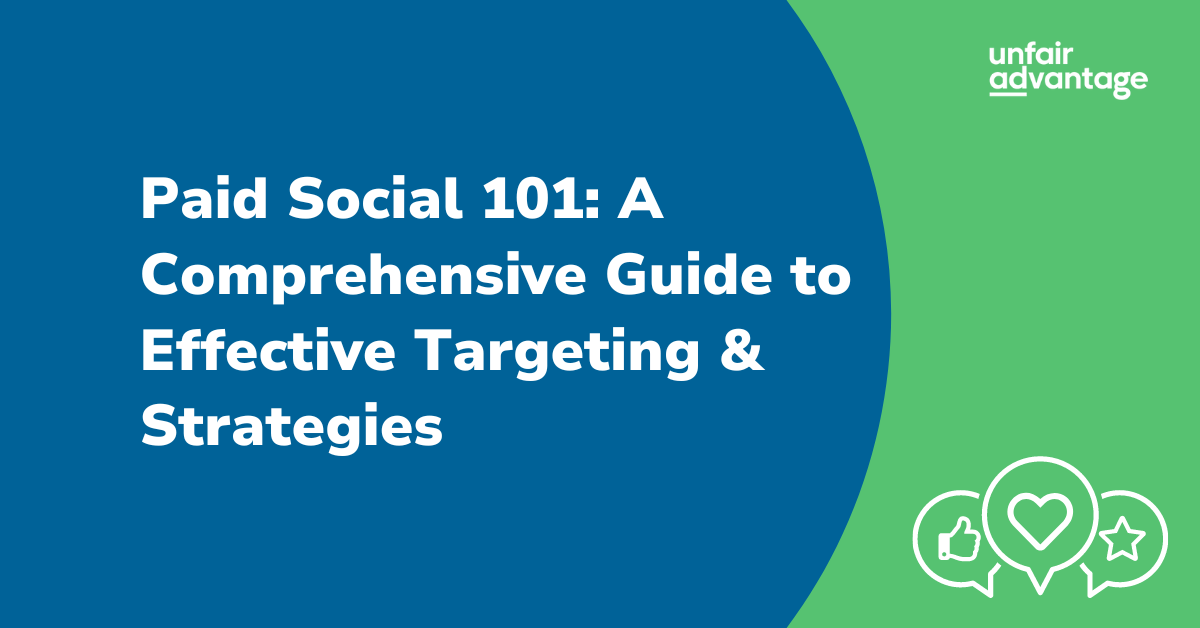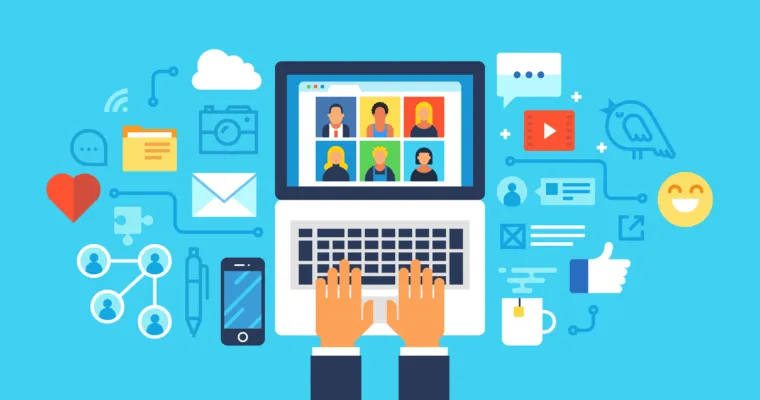
Paid Social 101: A Comprehensive Guide to Effective Targeting & Strategies
It is no surprise that in this day and age, leveraging paid social as part of your marketing strategy is essential for businesses of all sizes, especially SMBs. Whether you’re leading a company, driving its marketing strategy, or looking to optimize your digital marketing efforts, understanding how to effectively use paid social media can significantly impact your growth.
Targeting Options Across Platforms
One of the benefits of utilizing paid social for your marketing efforts is reaching people when they aren’t necessarily searching for something. With paid search, people are actively searching for your product or service. Paid social is a great way to increase awareness and conversions from people who don’t even know they want your product or service!
Meta is a great option for B2C businesses- specifically e-commerce businesses. The platform offers a diverse range of targeting options, including demographics, interests, and behaviors, allowing businesses to target specific user characteristics. The platform also has the ability to use Custom Audiences, utilizing customer lists or retargeting website visitors as well as Lookalike Audiences that help find new users similar to your best existing customers.
Example of Meta Interest Based Targeting:

When it comes to B2B marketing, LinkedIn is the clear standout. This platform is less “social” and more professional and offers targeting options based on company size, industry, job title, skills, and LinkedIn Groups. LinkedIn also offers Matched Audiences for retargeting.
A great social platform to tap into for awareness is X (formerly Twitter). Similar to Meta, X allows targeting by keywords, interests, followers, and events, providing real-time engagement opportunities, while Tailored Audiences enables retargeting based on your data.
Pinterest is ideal for visually driven campaigns with options to target based on keywords, interests, customer lists, and Actalike Audiences, similar to Lookalike Audiences.
Effective Strategies for Different Platforms
Meta (Facebook and Instagram) is a very visual platform, so it is crucial that you utilize high-quality visuals. When using video, it is important to add close captions so people can understand the message when the sound is off. It is also important to have all placement sizes so you can run on reels and stories. To ensure the efficiency of your campaigns you should conduct continuous A/B testing of ad creatives, copy, and targeting options.
LinkedIn benefits from sharing thought leadership content, using lead generation forms, and leveraging Sponsored InMail for personalized messages. When optimizing for lead generation, you can create on platform lead forms to reduce barrier to completion or send people straight to a form on your site. Another great feature to use on LinkedIn is their document ads. These are a great way to share case studies, white papers, and other valuable content while gathering leads.
Example of a LinkedIn Document Ad:

X thrives on real-time engagement, promoted tweets, and impactful video content to capture attention. Running follower campaigns is a great way to boost brand awareness, credibility, and build an audience you can continue to market to. Read about how we helped one of our B2B clients increase their X (formerly Twitter) followers by 681% here.
Pinterest campaigns should focus on high-quality pins that provide more context about products and align campaigns with seasonal trends and holidays. This is typically best for e-commerce websites, and less useful for B2B businesses.
Examples of Pinterest Ads:

Ad Formats: What Works Best?
For Meta, it is important you test all ad formats. Every user has their own preference on how they shop/interact with ads. Ensuring your account has single image ads, video ads, carousel ads, and Stories will help your campaigns run more effectively.
Instagram Feed Ad:

LinkedIn also has a wide variety of ad formats like sponsored content, simple text ads, personalized dynamic ads, and Sponsored InMail. When running LinkedIn sponsored content, it is important to have 3-5 different creatives running for optimal performance.
On X, you can use promoted tweets to amplify messages, promoted accounts to gain followers, and promoted trends to highlight hashtags. Pinterest provides promoted pins to boost visibility, promoted carousels, and promoted video pins for engaging content.
Level Up Your Paid Social Campaigns
To achieve success in paid social campaigns, it is essential to set clear objectives, whether it’s for brand awareness, lead generation, or sales. Understanding your audience and where they are spending their time is another way to reach your ideal customer. Consistent testing of different campaign elements is necessary to determine what works best. Analyzing performance data and making data-driven decisions is key to optimizing campaigns and achieving significant growth.
If you’re ready to level up your paid social media efforts, contact us at Unfair Advantage. Our team of experts is here to help you navigate the complexities of digital marketing and achieve your business goals!

